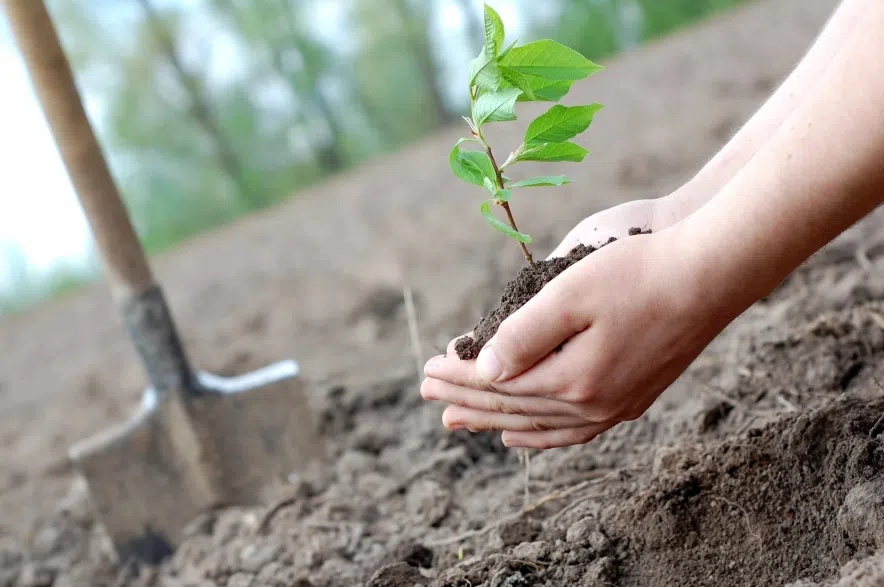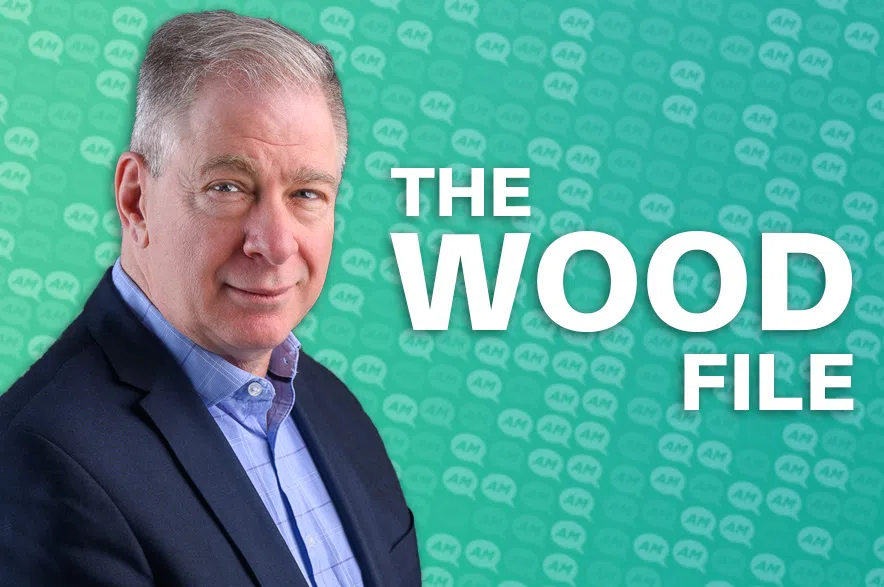Jill and Rick Van Duyvendyk answer all your gardening questions in Garden Talk on 650 CKOM and 980 CJME every Sunday.
Here are some questions and answers from the Feb. 2 show, which included special guest Aaron Cron from Lakeshore Tree Farms in Saskatoon:
These questions and answers have been edited and condensed for clarity.
Q: What do I need to know when planting a tree in a new neighbourhood?
A: Check your yard has been properly prepared for plants — you can check by digging to see if there’s a layer of topsoil. New neighborhoods are often in reclaimed well ends, so the yards can be high in alkalis and salts, and the soils don’t have the structure to hold oxygen when it’s wet.
A tree’s root zone, is the top 12 inches or so of soil, which is where most of the feeder roots are, so they need to be in a well oxygenated topsoil.
If you have a new home, make sure you have a layer of topsoil over the entire yard. Grass can grow in a lot of places with a very thin layer of topsoil but any tree is going to live for decades and its roots will extend beyond the mature width of the tree.
If a tree’s going to get six feet wide, you need to add about a foot of top soil six feet around that tree. Some narrow trees still have quite extensive root systems that extends 10-15 feet.
Read more:
- Garden Talk: What is the trick to using a banana to help orchids bloom?
- Garden Talk: How can I deal with aphids in 2025?
- Garden Talk: Plan ahead for a delicious raspberry harvest in 2025
Make sure you’re digging away the old soil first and then putting the topsoil on and make sure that any fill underneath has been levelled properly, so it doesn’t have low spots that catch water.
There may be a dip in the clay and it’ll become a place that’s always wet, especially if you’re irrigating.
When choosing a tree decide what are you trying to achieve — do you want something to look nice, do you need some shade or do you need to block a sightline for privacy privacy?
Other things to consider are if you want to see different phases of growth throughout the year and the size of your yard matters as well.
In Saskatchewan, we only have so many options. The colder or more extreme the climate, the more stresses there are, and the less variety there is. There’s only so many trees we can grow.
Read all the tags and labels on trees at the garden centre. More QR code are being used now on plants because sometimes all the information can’t fit on a tag.
Be careful using a search engine to find out information, results are not always accurate.
See Dutch Growers guide to tree planting here.
Q: How do I grow buckeye seeds and pine tree seeds I have collected?
A: Every seed has its own needs for how long it needs to be cold before planting. A few weeks is is enough for buckeye seeds. When planting just push them just below the surface of the soil at the end of April, there’s no need to start them indoors.
If you do want to get them going indoors be careful when you take them outside because they are susceptible to frost. Wait till the last week of May, first week of June to put them out. I’m saying just plant the seed at the end of April and come up naturally.
Pine seeds can be placed on the surface of the soil with a little bit of grit in spring as well. With new pine seedlings, leave them a whole year in to develop roots and the least risky time to move any conifer is in spring before it starts to grow.
Q: When should I start canna lilies indoors?
A: Start them around mid-February. The biggest thing when you’re starting your bulbs is raising the soil temperature. Sunlight alone may not be enough, so a heat mat will help.
They need sunlight as soon as you start seeing green on them and a bright sunny south or west-facing window is perfect. Don’t over-water them, let them dry out between waterings.
Q: What do I need to know about planting lilacs for a shelter belt?
A: When you transplant any shrub, you should have limited expectations of what it’s going to do the first year.
There’s two groups of lilacs — ones that sucker and ones that don’t. The traditional French lilac that blooms first thing in spring smells really good. They tend to spread and most only get about six feet tall, but there are dwarf varieties as well.
The later blooming lilacs are usually a hybrid with Villosa lilac, that’s used in farm shelter belts quite a bit but they get pretty big. The hybrids are called Preston lilacs, and you’ll get those at any garden centre. There are named varieties like Donald Wyman, Miss Canada and James MacFarlane.
Plant as early as you can and keep that moisture even, and with some fertilizer they should do very well. Plant them as far apart as you want, or as close as you want, it’s just a matter of how soon do you want it to be a hedge. There’s no need to plant them further apart than three feet if they are regular sized lilacs that grow to eight to 10 feet. With dwarf varieties plant a little closer.
Q: What are Canadian alternatives to buying seed and seedlings?
A: For example Proven Winners, which is an American company, has Canadians growing for them here. So it’s really important to do some research before we use that word boycott because there are so many small greenhouses that rely on those brands.
Proven Winners products here are rooted in a rooting station in Red Deer, Alberta and it’s a family owned business, shipping them across Canada.
The Canadian plant supply chain is growing every year. A lot of tropicals come from B.C. or Ontario instead of going down to Florida.
Even Canadian grown products can have a royalty attached to an American company, and some cuttings even come from South America and being flown into Canada bypassing the U.S.
Supporting local is really important, so do your research .It’s tough for plants to cross borders, there are a lot of rules and you need a licence to do so and inspections. In the last 40 years especially, the horticultural industry in Canada has absolutely exploded with development and plants are started here, finished here and sold here.
Read more:











